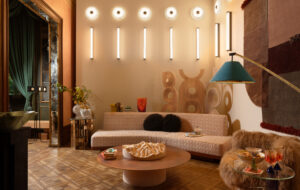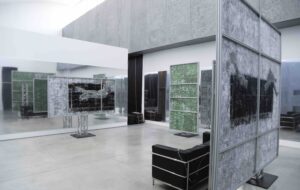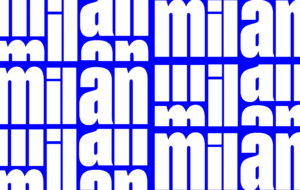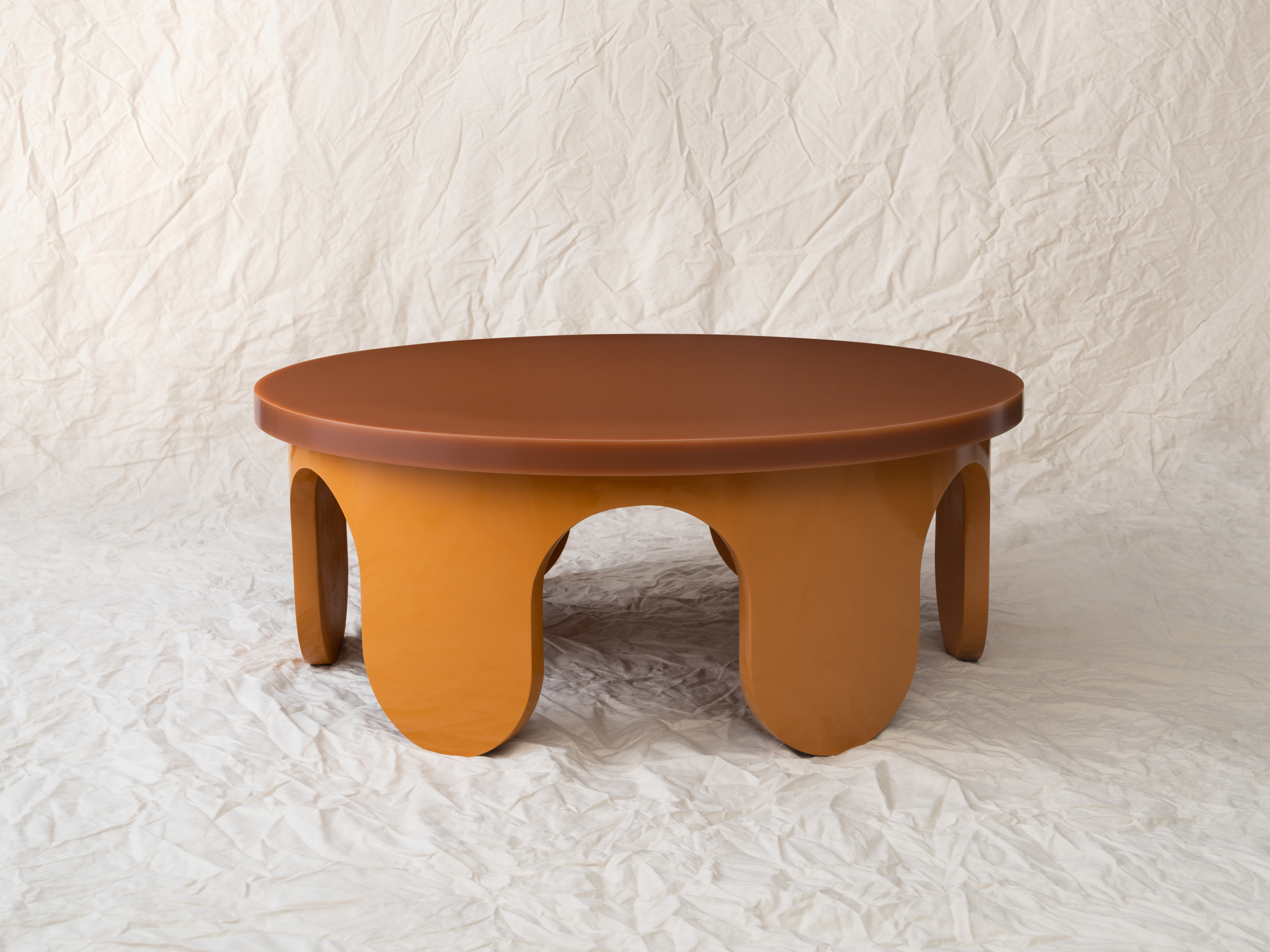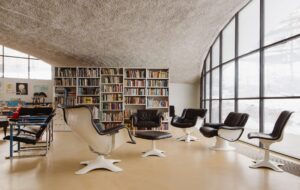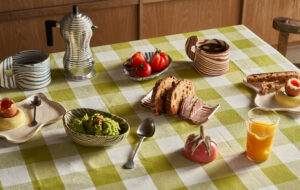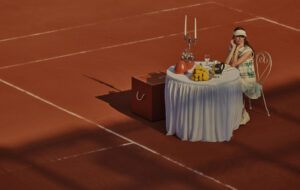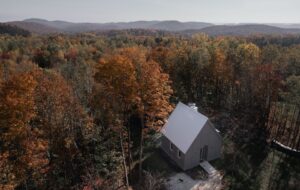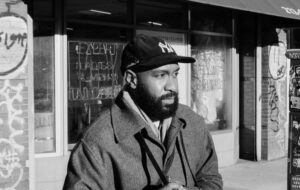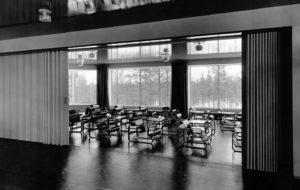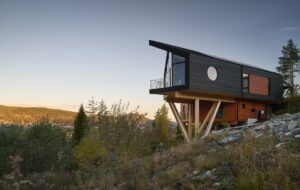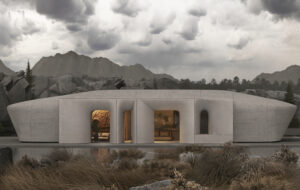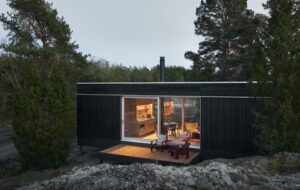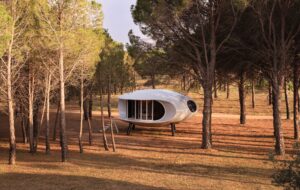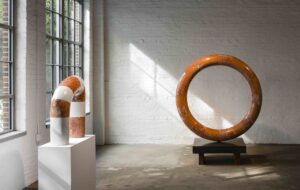|
Tall buildings were the subject of two talks at CDW yesterday (21 May 2014). Here, we revisit a piece from 2009: a homage to JG Ballard by Will Self as he visits the world’s tallest building I wanted to take a bus from the Nakheel sales offices by the Palm Jumeirah to the Mall of the Emirates, some five miles away – for me the walking was over, the cab ride in from the desert had torn through the enormously distended calf muscle that stretched all the way from Shepperton; from now on I would be taking Dubai on its own mechanised terms. You have to visit a shopping mall while you’re in Dubai – if you don’t (and don’t spend at least 300 dirhams while you’re there), Sheikh Mo’s secret police, the Amn al-Dawla, will detain you and you may even be tortured. All right, I made this last bit up, the police only arrest people for crimes that are clearly on the statute book – adultery, dope, buggery – and they only flog someone or put them to death once in a blue moon. There are subtler forms of coercion at work in Dubai: a velvety rut for the natives, who get free everything until they express an independent opinion; and a dusty one for the helots, who no one will listen to anyway. Besides, why bother to exact such cruel retribution when the traffic will do it for you? An American expatriate I spoke to told me that pedestrians are killed “every week” scampering across the multi-lane highways, and is it fanciful to imagine that it is these people – whether through immiseration or ideology – who are the potential insurgents? After all, what can they be attempting to escape from save the deadening conformity of the mall, where the multiracial throng shuffles seven times around the glassy cabinet, pointing ritually at the desired object, while abandoned to the ecstasy of acquisition? I wanted to get the bus, but the PR had no idea where I could. “To be honest,” she vouchsafed, “Europeans don’t take them.” So she asked a brown colleague and he directed me towards the fake Chrysler Buildings of Knowledge City. I had to walk a mile up to the pedestrian crossing over the Al Sufouh Road, and when I reached the stop I found there wasn’t a service directly there. Anyway, the men squatting in the shadow of the air-conditioned shelter didn’t want me to take a bus – they seemed outraged by the idea of my broaching the transport colour bar, and bundled me unceremoniously into a cab driven by Zony from Swat in Pakistan. Zony had seen his three children twice in the last six years: “What can we do?” he said. “We are poor people.” I asked him about the Swat regional government’s recent concession to the local Taliban, allowing them to impose sharia law. “I want religious system,” he said, “but not for all people. It is like this, you are human – I am human …” I began, I confess, to tune out when I heard these words: on the face of it a decent proposition, a lowest common genetic denominator of morality – but I didn’t feel particularly human that afternoon, I’d just made landfall from another planet, and I had the starbursts of interstellar travel still popping in my eyes to prove it. At the Mall of the Emirates a life-size stuffed giraffe was for sale and there were women wearing abayas chucking snowballs at each other at the bottom of the ski slope. I stood and watched them while an Emirati in white robes pressed himself against the back of an East European blonde in Lycra, his pretext: steadying her hand while she took a photograph of the black sacks shooting out white balls. This ski slope – complete with ski lifts, artificial evergreens and Swiss-chalet-style woodwork – is the crystalline essence of all thinking concerning Dubai’s exponential growth. For critics it is the dernier cri in wastefulness, as well as an anti-natural folly to rival anything a Des Esseintes might contrive; while for the boosters this is the material form of the Emirate’s chutzpah: a carney shtick that wouldn’t be out of place on Coney Island. For my part, the ski slope of the Mall of the Emirates had no more impact than my own fridge – it was just another big icebox full of human leftovers (“I’m ham – you’re ham”). If it had any significance it was that here was a large artificial environment inside another still vaster artificial environment – the mall itself. By no stretch of the imagination were Esprit, Bulgari and Borders to be found naturally occurring on the Trucial Coast – their climate control required quite as much power and desalinated water to function as the 300ft of powder the Puffa jackets slid down. Like The World, the ski slope was a model of a model – a reduction that allowed the disinterested observer to see the ideal of human progress writ painfully small. But then I’m by no means the ideal customer for these, ahem, facilities – I was underwhelmed by the Brent Cross Shopping Centre, which, when it opened – in 1976 – was then the biggest mall in Britain with a piffling 74,620 square metres of retail space and concourses. Indeed, I struggle to cross these wastes of tiling, and whenever I enter a mall I worry that I may either suffer a heart attack and collapse in a water feature, or, having bought a small ornamental glass bowl, repair to the toilets – last cleaned thirty-six minutes ago – and slash my own wrists in a cubicle. Of Kubrick’s 2001: A Space Odyssey, Ballard had written: “Its huge set pieces reminded me of Gone with the Wind, scientific pageants that became a kind of historical romance in reverse, a sealed world into which the hard light of contemporary reality was never allowed to penetrate.” And the same could be said of any shopping mall worth its rental – and especially the Mall of the Emirates, where the arches, embayment and balustrades insistently recalled to my mind episodes of Star Trek, wherein the crew of the USS Enterprise touch down on alien planets forever frozen in a 1960s evocation of the Italian Renaissance. Downtown Dubai may have been U/C, but riding in my yellow Dubai taxi I was able to penetrate its bewildering defences – star-shaped roundabouts, concrete horn works, asphalt bastions – with disquieting ease. The core of this fortress comprises the Old Town, a purpose-built “Arabian village”, where – according to Emaar, the developer – “you will live ensconced among these epochs while looking out at the very pinnacle of modernity”; to whit: the Burj. It’s a vision thing, Dubai, and the very essence of Sheikh Mo’s vision is its fecundity. Safi Qurashi, the owner of Great Britain Island [in The World archipelago], was to admonish me for not admiring the tremendous alacrity with which Sheikh Mo had scattered his magic seed, the rapidity of its germination, and the mighty pulsion with which these steely blooms had thrust skywards, but standing in front of the Palace Hotel – a massive reddish lump of Arabian Nights, complete with minarets, cusped arches, domed roofs and Kalasa finials – I could think only of Standard & Poor, who had downgraded Emaar’s considerable debt from A– to BBB+. The developer had lost 1.6bn dirhams (£304m) in the last quarter of 2008, and however optimistic King Qurashi might be, Sheikh Mo’s government had warned that the Dubai economy might well shrink in the second half of 2009. Standard & Poor, and the almost indecent up-thrust of the big prick of the Burj, which poked the darkling empyrean beyond the Palace. Forgive me, Sigmund, for paraphrasing your apocrypha, but while sometimes a cigar may just be a cigar, a tall building is always a big dick – and what does it say of the Arabs that they feel compelled to erect so many of them? According to the CTBUH (Council on Tall Buildings and Urban Habitat), the acknowledged arbiter of loftiness, of the twenty tallest buildings in the world come 2020, 50 per cent will be in the Middle East, five of these will be in Dubai alone, and the Burj will be overlooked by the kilometre-high Nakheel Tower. Probably no bad thing. The watchword of Adrian Smith, who designed the Burj for Skidmore Owings & Merrill (SOM), the US architectural practice, is “contextualism”, an alleged response to the rejection/evolution of big-bland-curtain-walled-box modernism. “An architecture designed for war – on the unconscious level if no other.”* Some cynics I’ve spoken to have suggested that Smith’s groundwork for his megaliths consists quite simply in “walking around taking a few snaps”, but in fairness to him, isn’t this the true context of signature buildings such as the Burj? They are intended to be apprehended, fleetingly, on the screen of a digital camera, by Samsonite-baggers who will be gone in the morn – the fact that the Burj bears no relation to its context is a given: there is no fucking context. Before the contractors began work this site was an abandoned army camp on the desert fringes of the city, and now the Old Town Island has been “created”, the context for the Burj is a faux Islamic ville, its archways, porches, gardens, platforms and vistas – indeed, its entire spatial hierarchy – created from scratch. The Burj’s “Islamic” credentials rest on its triple-lobed floral floor plan, which is visible only from Sheikh Mo’s helicopter, the building’s own observatory, and possibly the Nakheel Tower. I’m already feeling anxious about the Nakheel Tower – the sapping succubus of impotence wraps itself around Downtown Dubai’s mighty loins. I’m worried about other erections in the Master Plan as well – what of HQ1, DS1, DS3, DS4, and my personal fave, FC2? What will any of us do without them? More specifically I’m concerned for the members of CTBUH, an organisation that, like SOM, hails from Chicago. Are they feeling the wind of change in the windy city? Do they sit, futilely rubbing their crotches against the underside of their meeting-room table, knowing only too well that if others can’t get it up they’ll have nothing to do? For now, Emaar is keeping the erection-measurers in suspense, with no final decision on exactly how high the completed Burj will be – a mind-boggling foreplay as C80, the highest-strength concrete known to man (capable of withstanding 12,000 PSI gravity loads) is oh so delicately poured. Mmm. Or maybe – I considered this after being offloaded at the Palace Hotel by the Swat man – Smith is in fact finely attuned to the very Bedouin functionalism that Thesiger identified, but rather than arranging three stones for a nomad’s pot, for Sheikh Mo, Smith’s arranging a gargantuan trilithon, the two uprights of which are the Burj Dubai and the Nakheel Tower? I shuddered to think what the crosspiece would look like, as I sauntered through the Palace’s spotless lobbies with their alabaster bowls full of nothing, their winking tea lights and arrases behind which lurked the eunuchs of high finance. I stopped into the gift shop, and from pure reflex checked their map display – no sign of the elusive off-road Map 5, but there was a map of Dubai City printed on cloth. Cloth? What was I gonna do with that – surely only something that would lead me to fall foul of the proposed new media law, making it an offence to report gloomy economic news, such as: your city is covered in snot. Outside, at the end of the pool, past the gleaming cabinet of shishas and the tented loungers, I took my place and sipped a ten quid tomato juice as the Burj wavered in the twilight. True, if you focused hard and concentrated on the fact that the derrick cranes near the building’s summit must be ten storeys high, then the scale of the world’s tallest building became apparent – but surely such an exalted edifice shouldn’t require such an effort? Squint upon my works, ye mighty … I was waiting for my man – one of the team working on the Burj with responsibility for ensuring that the contractors fulfilled the design spec to the letter. He arrived looking cool, suited, booted – and in every way urbane. He ordered a Heineken, and when I remarked, “Fuck Heineken,” he got the reference. Then he talked of step-backs and buttress cores, of how the asymmetric structure allowed for damping the inertia of the building’s movement. He spoke of sputtering – the method used to coat the Burj’s exterior cladding with the right synthetics to resist the climate. He expatiated on the relationship between the architects and Giorgio Armani, who would be responsible for some thirty-seven floors of hotel and a further sixty-four of apartments. My man seemed to feel that Armani embodied total design excellence – I thought only of his legendarily clean lines burning into my body: fiery brands – what could it be like to live inside a brand …? And what could it be like to live inside Armani himself? “My clients,” he has said, “come for me, they come back each season for my spirit.” So, let’s get this straight: by buying an apartment designed by a 75-year-old workaholic, you would – in some strange sense – be coming back to him? Armani himself has admitted to spending a mere twenty nights in four years at a beautiful apartment that he owns facing on to Central Park in New York; so, in coming back to Armani, one is clearly not re-entering one’s home – it might be better to regard the Armani apartment in the Burj as being on a par with a suit, merely one among a rack of apartments, slipped on for an evening, before being abandoned, crumpled, on the floor of the desert. “… legacy projects.” My man was finishing saying something when I tuned back in, but then he added: “I don’t think that people here are any more opportunist than anyone else.” I looked at him blankly, trying to remember who he was, who I was, and what we were both doing here, sitting on a terrace in the Middle East looking at a Thai restaurant on the banks of an ornamental lake. “People always ask how they get the last crane down,” L’Uomo Armani observed, mistaking my farsighted expression for Burj worship. “Oh, I know already,” I said blithely. “The workers disassemble it, then they cut it up with oxyacetylene torches, then they eat the bits of steel – I’ve seen them myself, squatting beneath the flyovers of the Sheikh Zayed Road, their faces a tormented rictus as they try to expel these evil shards.” No, I didn’t in fact say this, but I might as well have, for we were that far apart: he in his happy community – he had told me he lived out at the Marina, that he chatted with his neighbours – me with my vision of ruins to come: “The high rise stank. None of the lavatories or garbage-disposal chutes were working, and a faint spray of urine hung over the face of the building, drifting across the tiers of balconies. Overlaying this characteristic odour, however, was a far more ambiguous smell, putrid and sweet, that tended to hover around empty apartments, and which Laing chose not to investigate too closely.”* JG Ballard sited his fictional high rise on the Isle of Dogs; a decade later real high rises arose there, and Canary Wharf became the financial centre of London. One of the final components in the development – the completion of which had been delayed by the recession of the early 1990s – was Canary Wharf Towers, topped out in 2001. The architect was Adrian Smith. The cab driver who took me back to Deira, the old centre of Dubai City, was a young Pakistani man. I don’t know if my questioning was a little brutal – how long have you been here? Where are you from? Is it OK, have you got enough money? – but after responding as best he could: nine months, Karachi … he stumbled over his third reply. Then, pulling up in front of the hotel, he put his fists in the inky shadows of his eye sockets. “Life is bad,” he said simply. Words © Will Self 2009. Extract taken from Psycho Too by Will Self and illustrated by Ralph Steadman, published by Bloomsbury. Originally published in 2010 under the title High Rise: A Fantasia on a Visionary Theme by Sheikh Mohammed bin Rashid Al Maktoum |
Image Ralph Steadman
Words Will Self |
|
|


